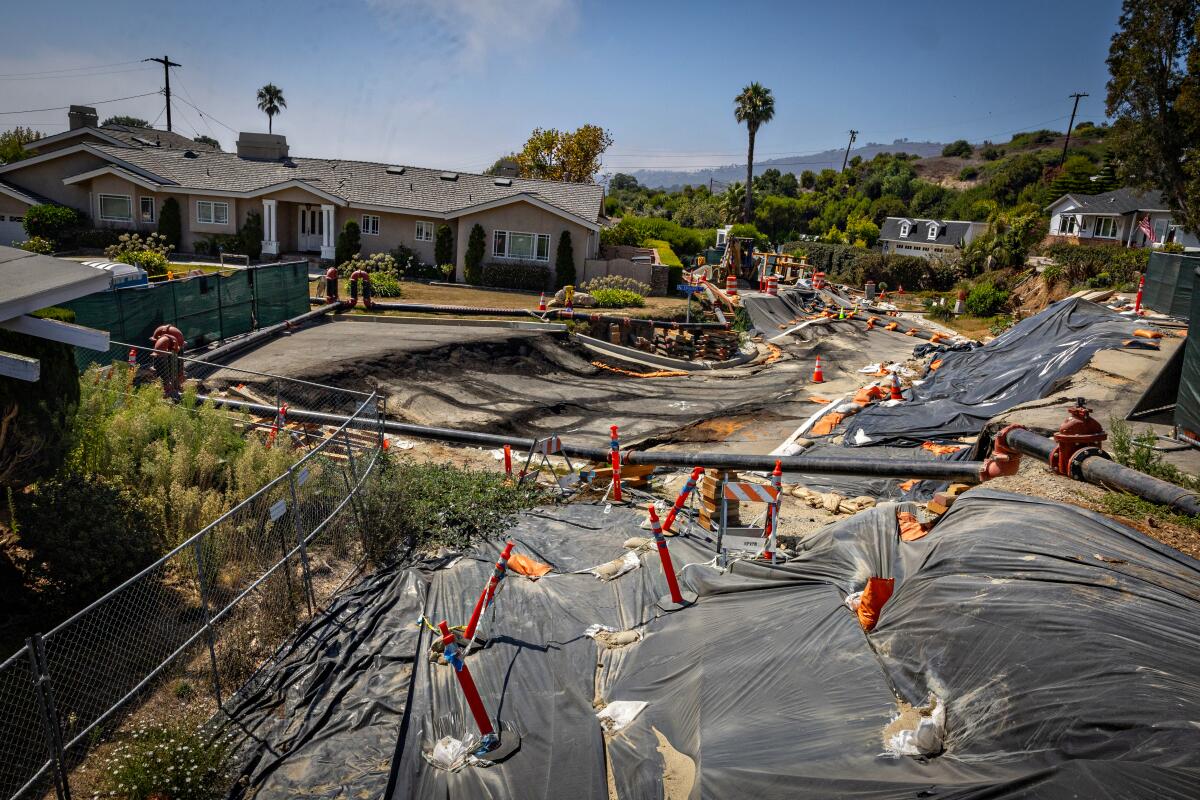Letters to the Editor: Palos Verdes land slippage isn’t a new problem. Why did people build there?

To the editor: When I was a child in the 1950s, no trip to Marineland of the Pacific on the Palos Verdes Peninsula was complete without my parents driving us through Portuguese Bend to show us evidence of land movement — buckled and cracked streets, and above-ground utility piping with flexible joints.
Land movement on the peninsula has been a well-known issue for the better part of a century, and those who built or bought there must accept some personal responsibility for the inevitable outcome. The same is true for whatever local government entities zoned for or permitted construction in this obviously high-risk area. The original builders are probably long gone, but any who aren’t and the civil entities who enabled them must be held liable.
The area should have never been developed, but rather left as a wilderness preserve for endangered species endemic to that peninsula. That can and should still happen.
Robert Huber, Yorba Linda
..
To the editor: I would like to read more on the history of land slippage and home loss in the Portuguese Bend area. My grandfather lost a house there due to slippage decades ago, and the topic was discussed in a geology class I took at Occidental College in the early 1970s.
Why has so much development happened since then? What building requirements were put in place, if any, to help minimize and prevent the current round of problems? What are the lessons that need to be learned to prevent further emergencies?
Fred Linthicum, Bend, Ore.







